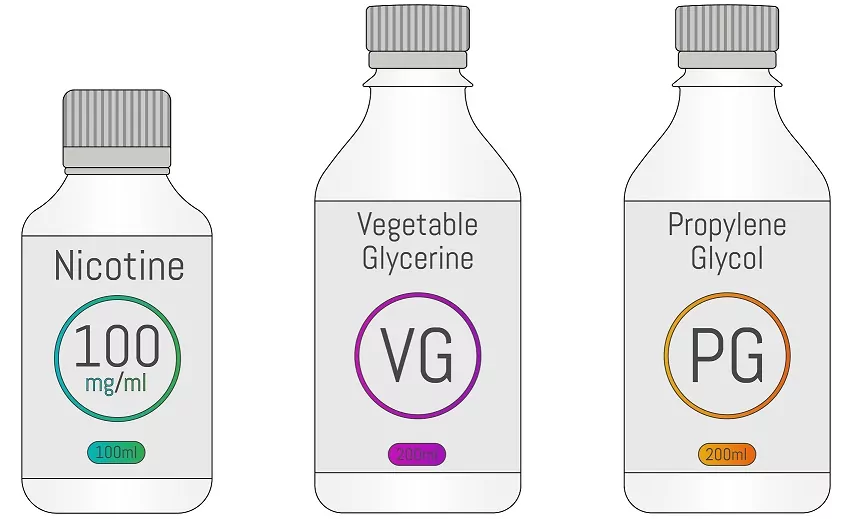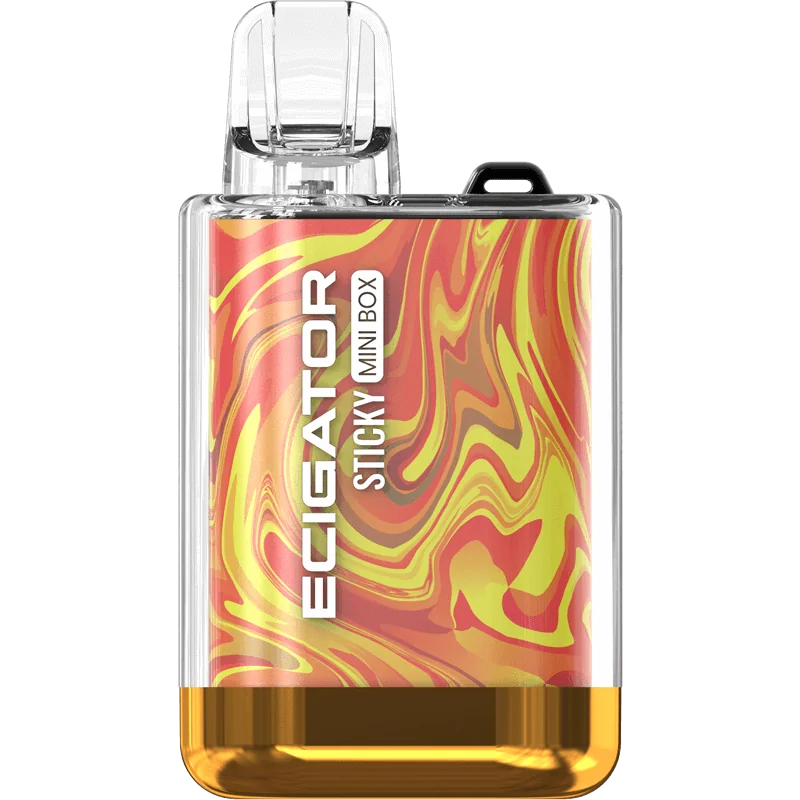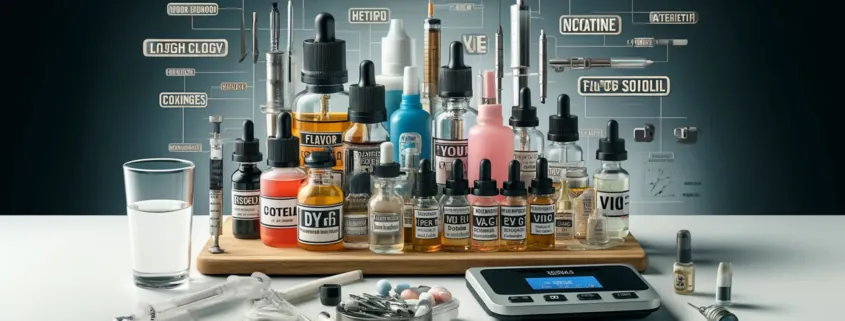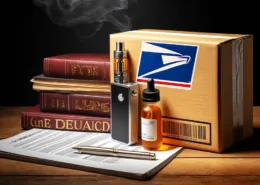Make Vape Juice Without PG or VG: A Comprehensive Guide
Vaping has emerged as a popular alternative to smoking, offering a less harmful way to enjoy nicotine. At the heart of the vaping experience lies the e-liquid, also known as vape juice. Typically, vape juice consists of two primary ingredients: propylene glycol (PG) and vegetable glycerin (VG). While most commercial e-liquids contain a blend of both substances, some vapers prefer to create their own DIY vape juice using only one of these base ingredients.
This comprehensive guide delves into the intricacies of making vape juice without PG or VG, providing valuable insights and step-by-step instructions for crafting a personalized vaping experience tailored to individual preferences.
Understanding PG and VG
Before embarking on the journey of creating vape juice without PG or VG, it’s essential to understand the unique properties and characteristics of these two base ingredients.
Propylene Glycol (PG)
Propylene glycol is a clear, odorless, and slightly sweet liquid that serves as a flavor carrier in vape juice. It is responsible for delivering the desired throat hit and enhancing the overall flavor intensity. However, PG can cause allergic reactions in some individuals and may lead to dry mouth, eyes, and nose when used excessively.
Vegetable Glycerin (VG)
Vegetable glycerin, derived from vegetable fat, is a thick, odorless, and naturally sweet liquid that plays a crucial role in vapor production. E-liquids with a higher VG content tend to produce denser vapor clouds but may lack the strong throat hit and flavor intensity associated with PG-based juices.
Comparing PG and VG
To make an informed decision when creating vape juice without PG or VG, it’s helpful to compare the key features of these two base ingredients.

| Features | PG | VG |
|---|---|---|
| Vapor density | +++++ | ++++++++ |
| Flavor intensity | +++++++ | ++++ |
| Sweetness | ++ | ++++++ |
| Throat hit | +++++++ | +++ |
| Wick time | +++ | +++++++ |
| Gunk build-up | +++ | +++++++ |
| Allergy risk | ++ | + |
Essential E-liquid Ingredients
In addition to PG and VG, vape juice consists of several other essential components that contribute to the overall vaping experience.
Flavorings
Flavorings are the chemical compounds responsible for imparting specific tastes, aromas, and colors to the e-liquid. According to research, the most popular vape flavors include imitations of natural menthol, tobacco, vanilla, strawberry, and banana.
Nicotine
E-liquids may contain varying levels of nicotine, ranging from nicotine-free options to a maximum of 20 mg/ml, as regulated by the EU TPD. Nicotine is available in two forms:
- Freebase nicotine: The standard form of nicotine found in most e-liquids.
- Nicotine salts (Nic Salts): A form of nicotine that provides a smoother throat sensation.
It’s important to note that nicotine is a stimulant responsible for the intoxicating effects of vaping, and higher nicotine concentrations lead to a quicker “high.”
Water
While not a necessary ingredient, water is sometimes added to e-liquids to dilute the juice and adjust its consistency.
PG:VG Ratios and Their Impact on Vaping
E-liquids are available in various PG:VG ratios, each offering a unique vaping experience. Understanding the impact of different ratios can help vapers choose the ideal blend for their preferences.
- 100% PG or 90% PG: 10% VG – Provides a strong throat hit, intense flavor, and minimal vapor production.
- 80% PG: 20% VG – Offers a powerful flavor and strong throat hit with minimal vapor output.
- 70% PG: 30% VG – Delivers a phenomenal flavor and throat hit with good vapor production.
- 60% PG: 40% VG – Provides a noticeable flavor and throat hit with decent vapor clouds.
- 50% PG: 50% VG – Strikes a perfect balance between throat hit, vapor levels, and cloud production.
- 40% PG: 60% VG – Produces significant vapor clouds with a moderate flavor and relatively low throat hit.
- 30% PG: 70% VG – Generates strong and dense vapor with a moderate flavor and minimal throat hit.
- 20% PG: 80% VG – Creates powerful vapor output and thick clouds with a noticeable flavor and slight throat hit.
- 10% PG: 90% VG or 100% VG – Ideal for high-wattage devices, producing the highest vapor output with a slight flavor and throat hit.
It’s crucial to avoid e-liquids containing over 70% PG, as they may cause allergic reactions or a harsh throat burn. Conversely, high VG juices should be avoided by vapers who prefer subtle and discreet vaping experiences.
Reasons for Making E-juice Without PG or VG
Some vapers choose to create e-liquids without PG or VG for various reasons, such as personal taste preferences, allergies, or the desire for a specific vaping experience.
PG, being a man-made liquid that absorbs water, can cause dry mouth, eyes, and nose in regular vapers when used excessively. On the other hand, VG, a naturally sweet substance derived from plant oils, can make e-liquids overly sweet and unpleasant for those who dislike sugary flavors.
In certain cases, these substances can be harmful to some individuals. For example, heated VG can become a potentially dangerous additive, while PG may be unsafe for users with allergies.
Experimenting with different PG:VG ratios allows vapers to find the perfect combination that suits their taste and preferences. The good news is that using an e-liquid with an incorrect ratio does not cause any lasting damage; it simply results in an unpleasant vaping experience.

Ecigator Sticky Open Pod Kit
The Sticky Open Pod Kit is a contemporary vaping device that combines functionality with fashion. This kit is designed with a box-style form factor, offering a compact and stylish appearance that’s ideal for vaping enthusiasts on the move.
At the heart of this kit is a Refillable Open Pod System, with a capacity of 2ml, perfect for accommodating a variety of e-liquids. The pod is equipped with a high-quality Mesh Coil that not only ensures a rich and flavorful vaping experience but also boasts durability for up to 8 Refills.
Creating DIY Vape Juice Without PG or VG
Making your own e-liquid involves mixing either PG or VG with your preferred flavor concentrate and, if desired, nicotine. The first step in creating the best combination is to gather the necessary DIY supplies, including the chosen base ingredients and various materials, depending on your preferred mixing method.
Ingredients
- Propylene glycol or vegetable glycerin, based on your preference
- Flavor concentrate specifically designed for vape juice (single flavors or one-shots, which are pre-mixed multiple flavors)
- A bottle of 100 mL (3.38 US fluid ounces) with 36 or 48 mg/mL of standard nicotine or nicotine salt (optional)
Note for EU users: Due to TPD regulations, nicotine availability in the EU is limited to 10 mL bottles of 20 mg/mL strength. As a result, you can only purchase one bottle of these nicotine boosters at a time.
Materials
- Several 100 mL squeeze bottles with nozzle tips for storing the juice
- Cobalt or amber glass bottles for storing nicotine to slow its degradation
- Several 10 mL plastic bottles for testing recipes
- A few 60 to 120 mL PET or HDPE bottles for making larger batches of juice
- Inexpensive sticky labels for noting details
- A box of disposable gloves
For mixing juice by volume, you’ll also need:
- A few 10 to 30 mL syringes for base liquids
- Plenty of 1 to 5 mL syringes for flavor concentrates and nicotine
- 14-gauge needles
For mixing juice by weight, you’ll need:
- An electronic scale with a precision of 0.01 g that can measure at least 200 g, or preferably 500 g
- A pipette or syringe for nicotine
Mixing Procedure
- Purchase the necessary ingredients and materials from a DIY vape shop or online retailer.
- Fill a bottle with either PG or VG, depending on your preference.
- Add your chosen flavor concentrate to adjust the taste of the juice. Remember, less is more when it comes to flavoring, so avoid using large amounts.
- Never mix concentrates from different brands due to variations in flavor potency and profile.
- Avoid experimenting with potentially dangerous flavors or essential oils; only use concentrates specifically designed for vape juice.
- If you choose to use nicotine, exercise caution when preparing high-strength nicotine e-liquids.
- While some vapers use distilled water or vodka to dilute the juice, it’s best to avoid these additives.
- Take detailed notes throughout the mixing process to help improve future juice recipes.
Conclusion
Although most e-liquids contain both PG and VG, it’s not always necessary to include both ingredients. Vapers can create juice with different ratios of these substances or even omit one entirely, depending on their personal preferences and desired vaping experience.
When making your own e-liquid, it’s recommended to start with a 50%:50% PG to VG ratio and then adjust the proportions as you explore different combinations. However, it’s crucial to be aware that using only one base ingredient may have potential health implications.
By understanding the unique properties of PG and VG, experimenting with various ratios, and following the proper mixing procedures, vapers can craft personalized e-liquids that cater to their specific tastes and preferences while ensuring a satisfying and enjoyable vaping experience.
- How to Choose Safe CBD for Dogs Without Guesswork - August 4, 2025
- Texas Senate Passes Revised THC Ban Bill (SB 5) - August 4, 2025
- Best Delta-8 THC Carts of 2025: Top 5 Vapes Reviewed - July 16, 2025









